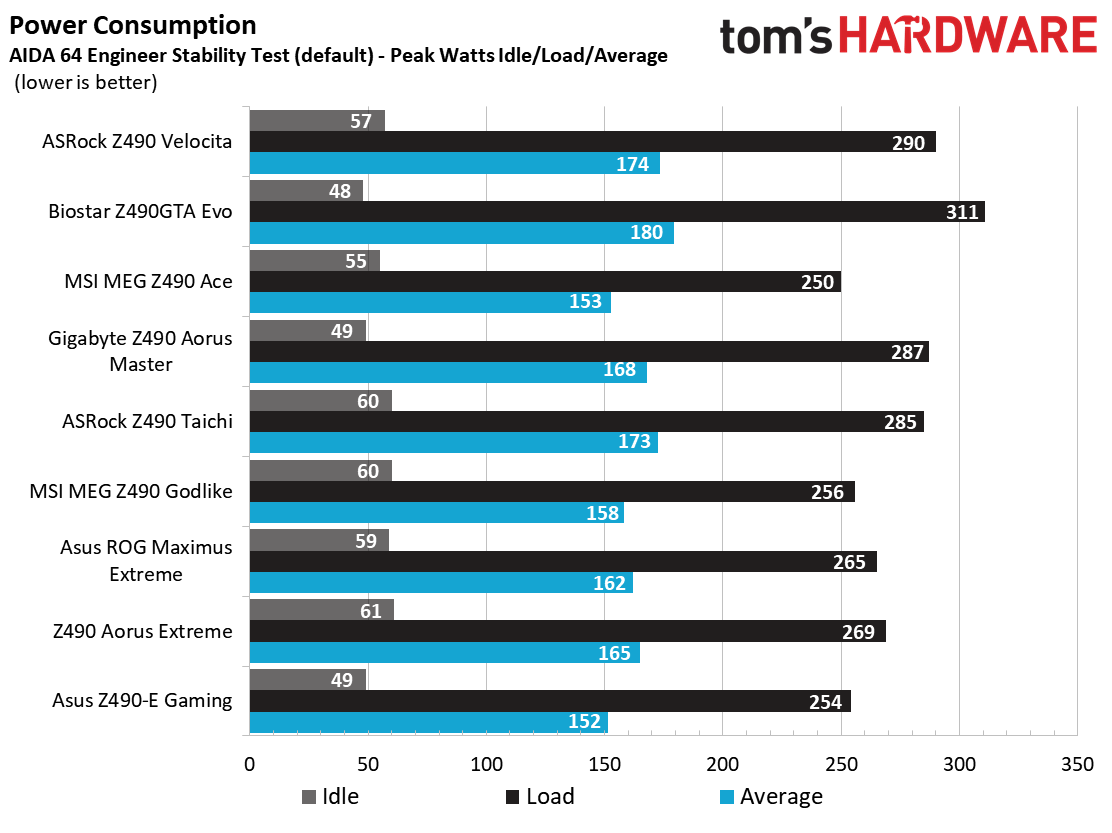Why you can trust Tom's Hardware
All standard benchmarks and power tests are performed using the CPU’s stock frequencies (including stock Thermal Velocity Boost), with all power-saving features enabled. Optimized defaults are set in the BIOS and the memory is set using the XMP profiles. For this baseline testing, Windows is set to High Performance, except for during power testing, where we switch to Balanced so the PC idles properly.
**The red bar represents the board we are reviewing, not the fastest/slowest result for a given chart.
Synthetic Benchmarks
Synthetics are a great tool to figure out if a board is running out of spec, as identical settings should produce extremely similar performance results. Advanced memory timings are the one place where motherboard makers can still optimize for either stability or performance though, and those settings can impact some testing.
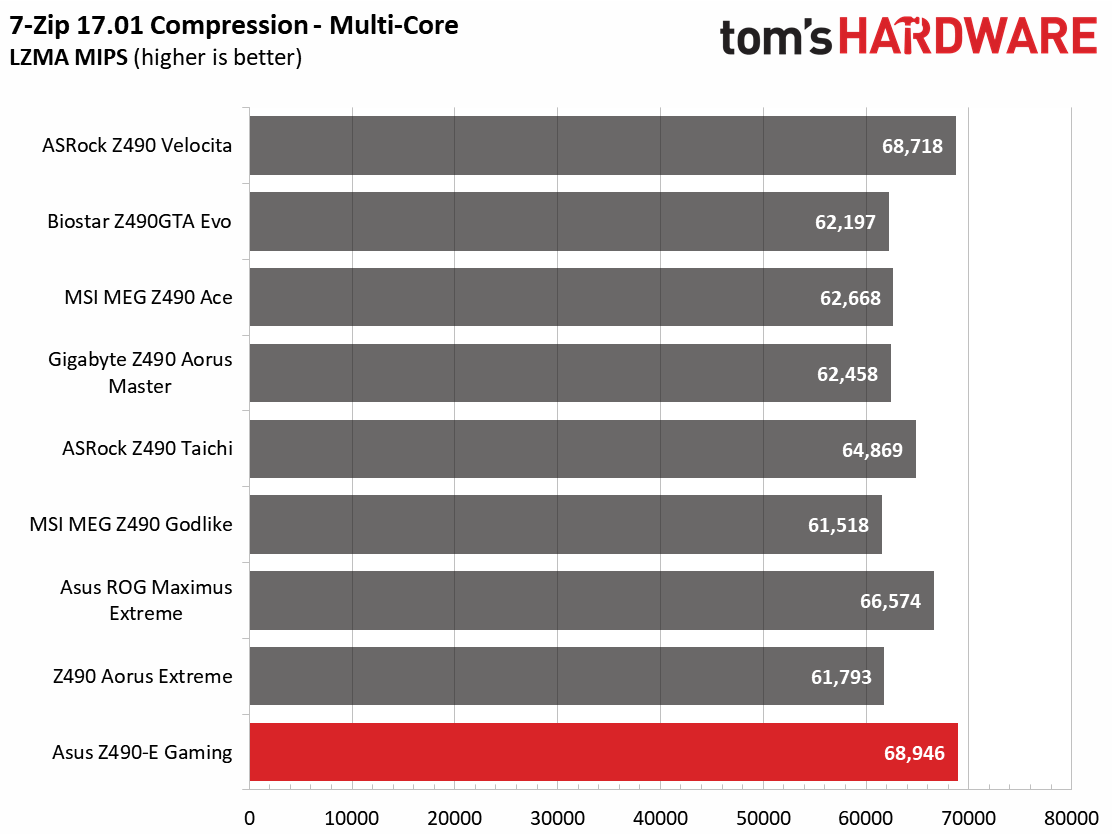
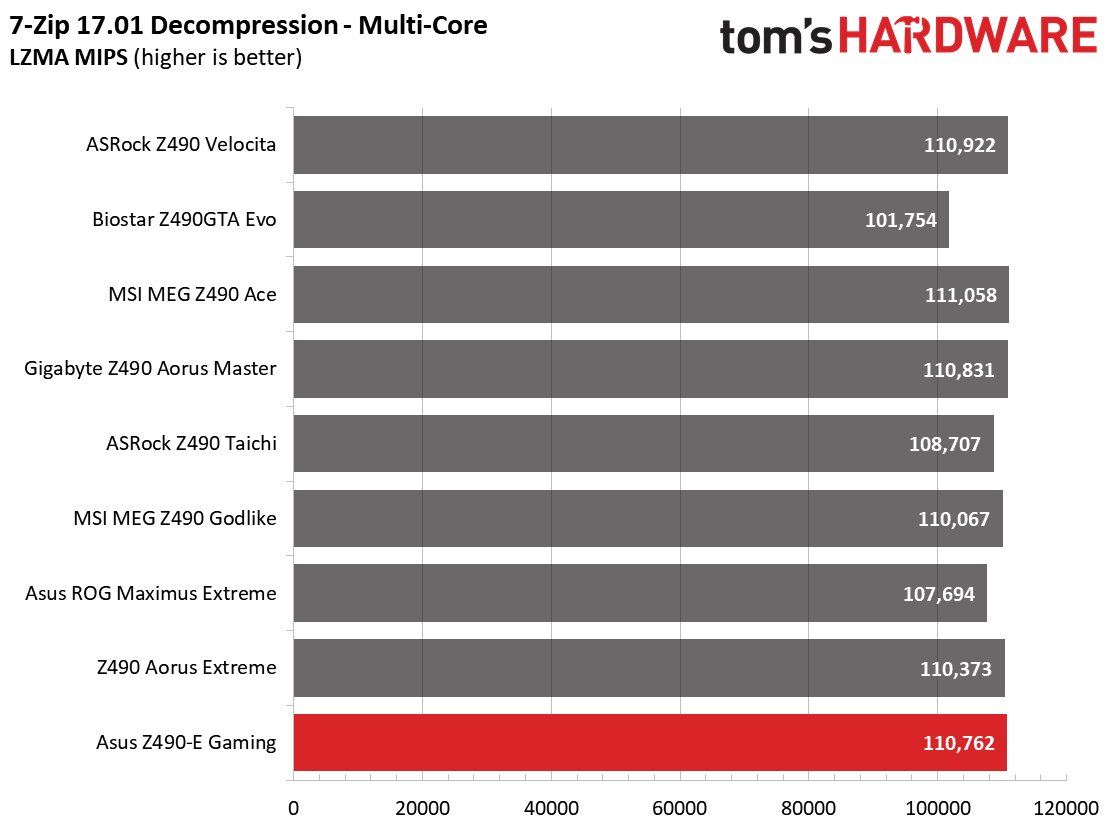
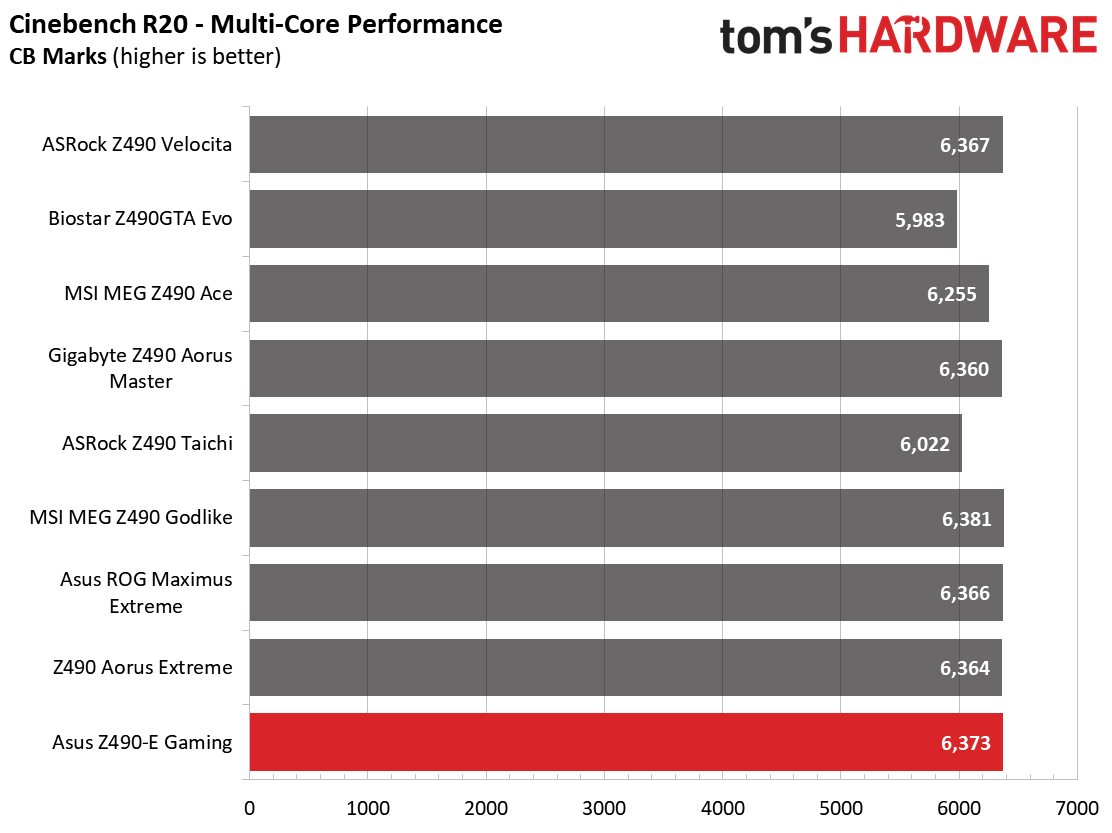

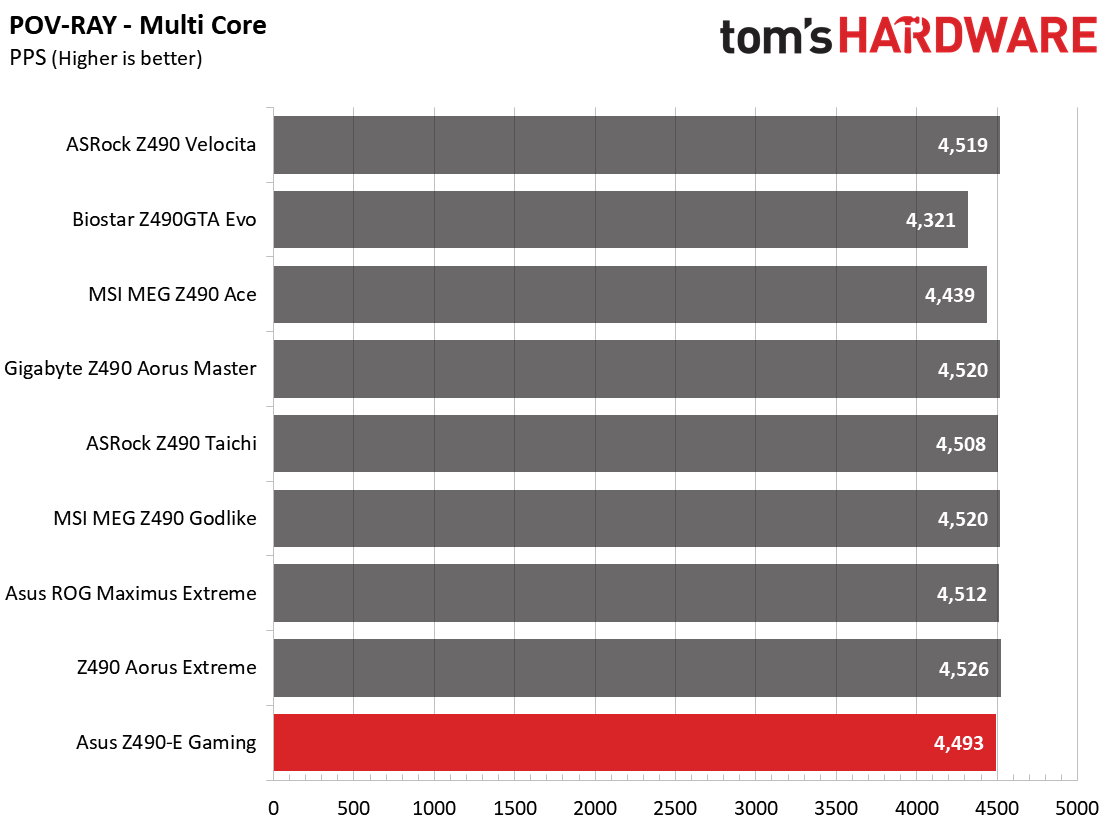
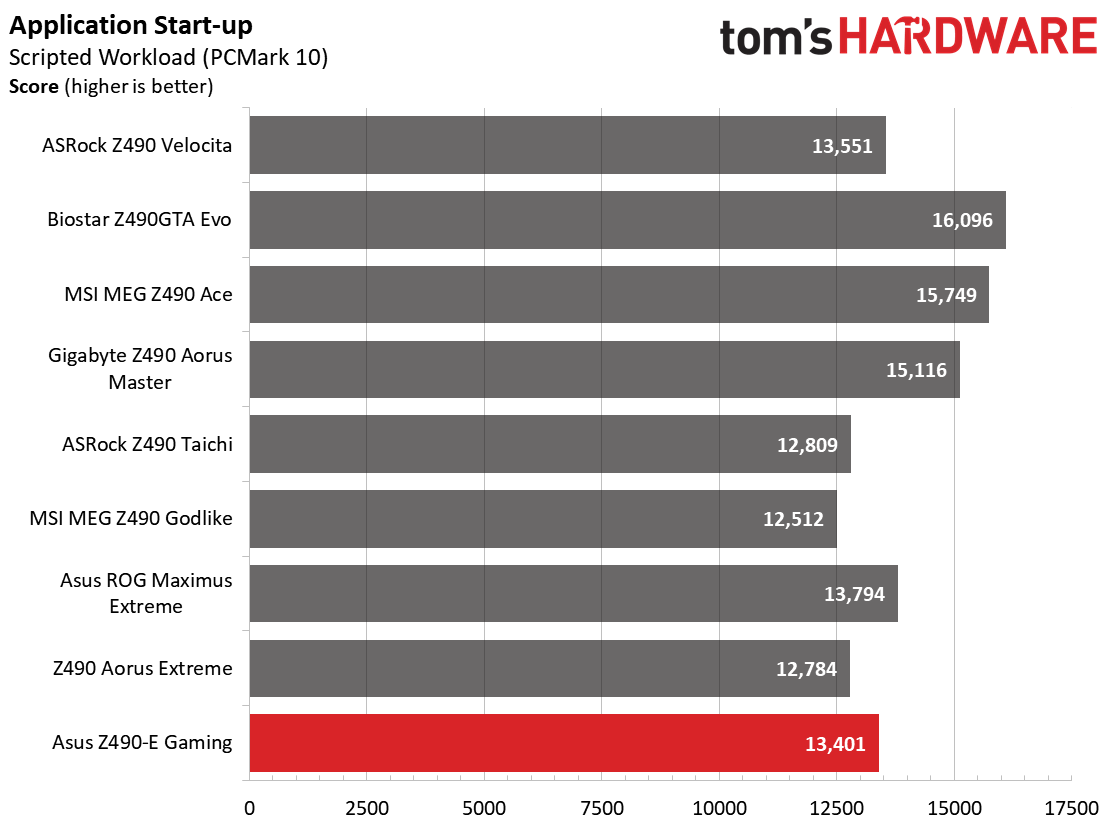
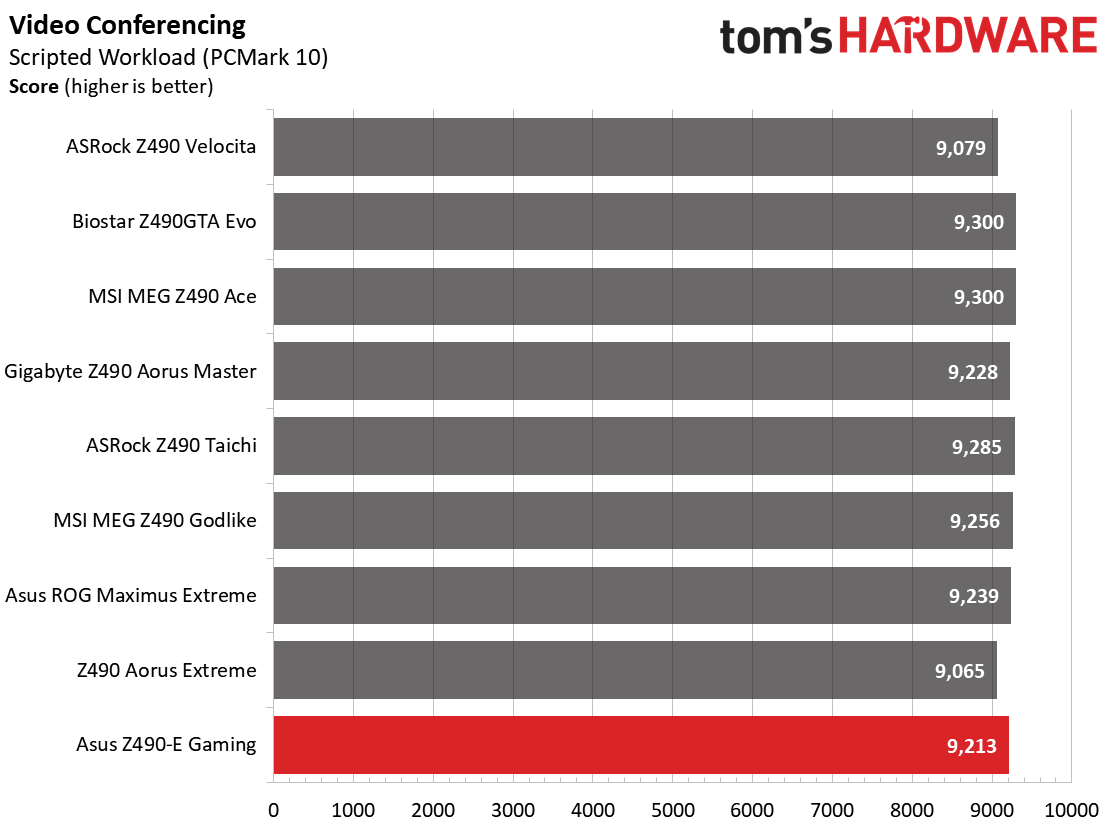
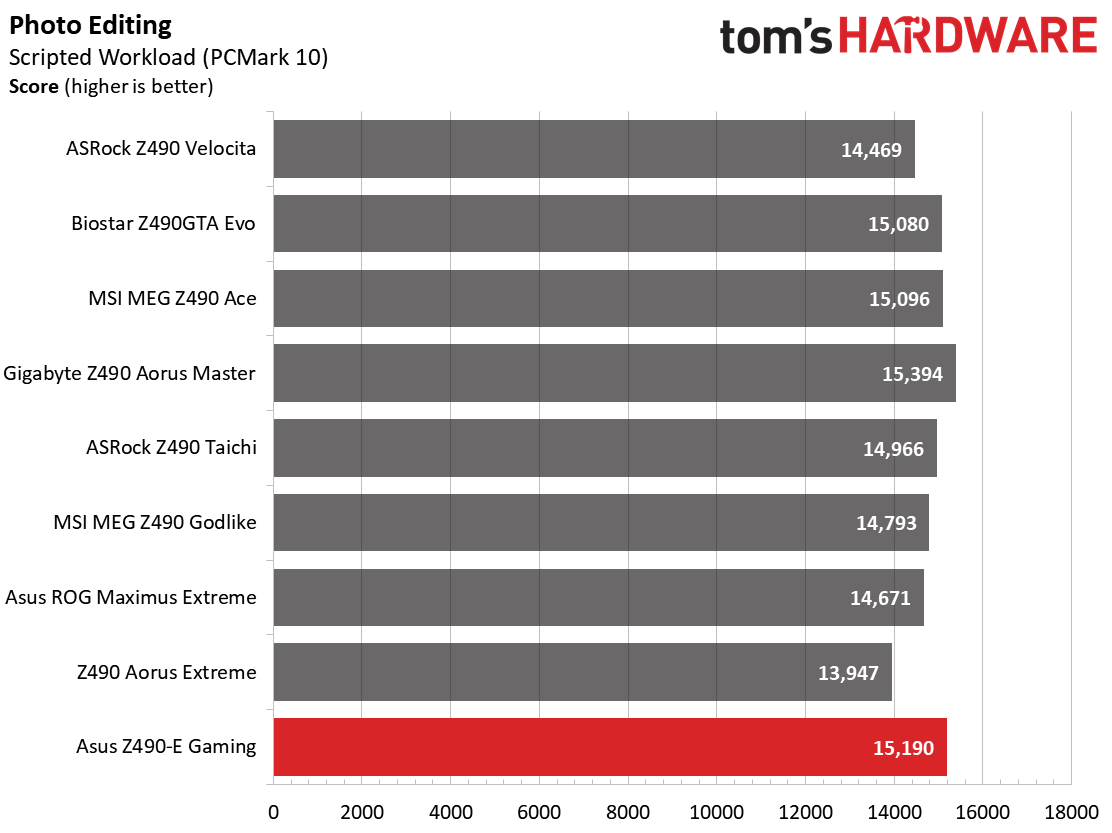


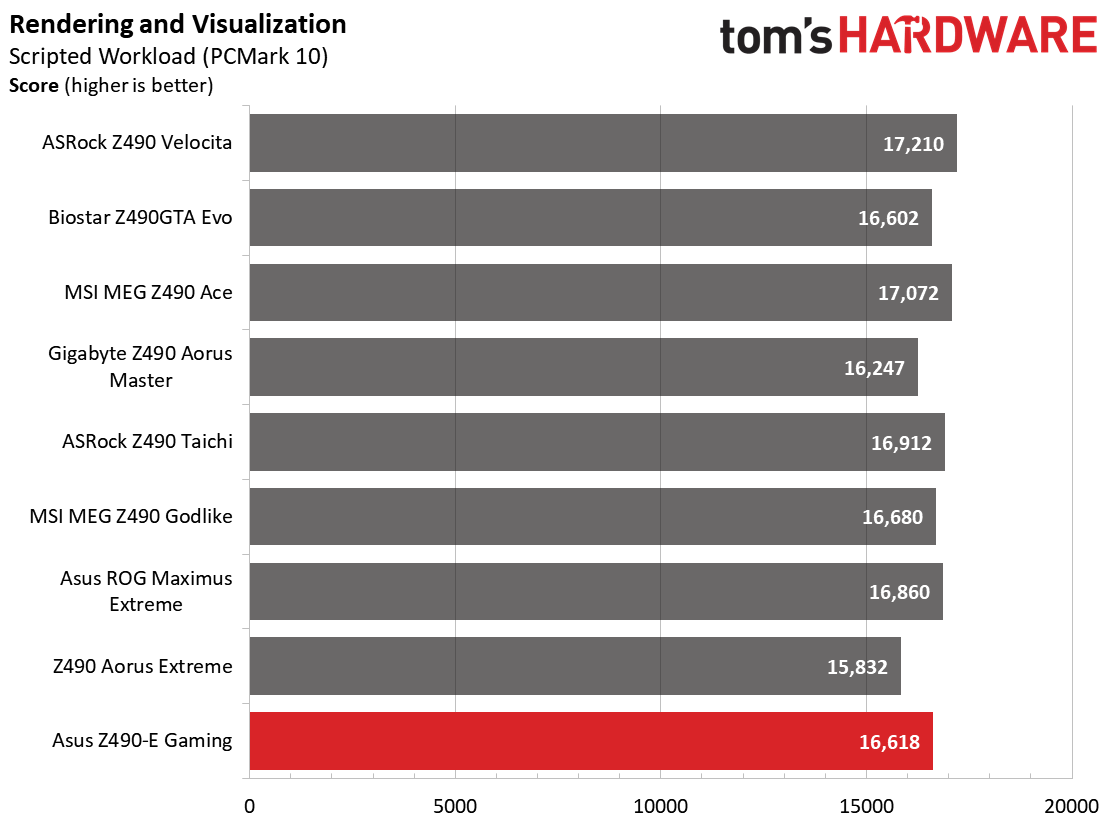

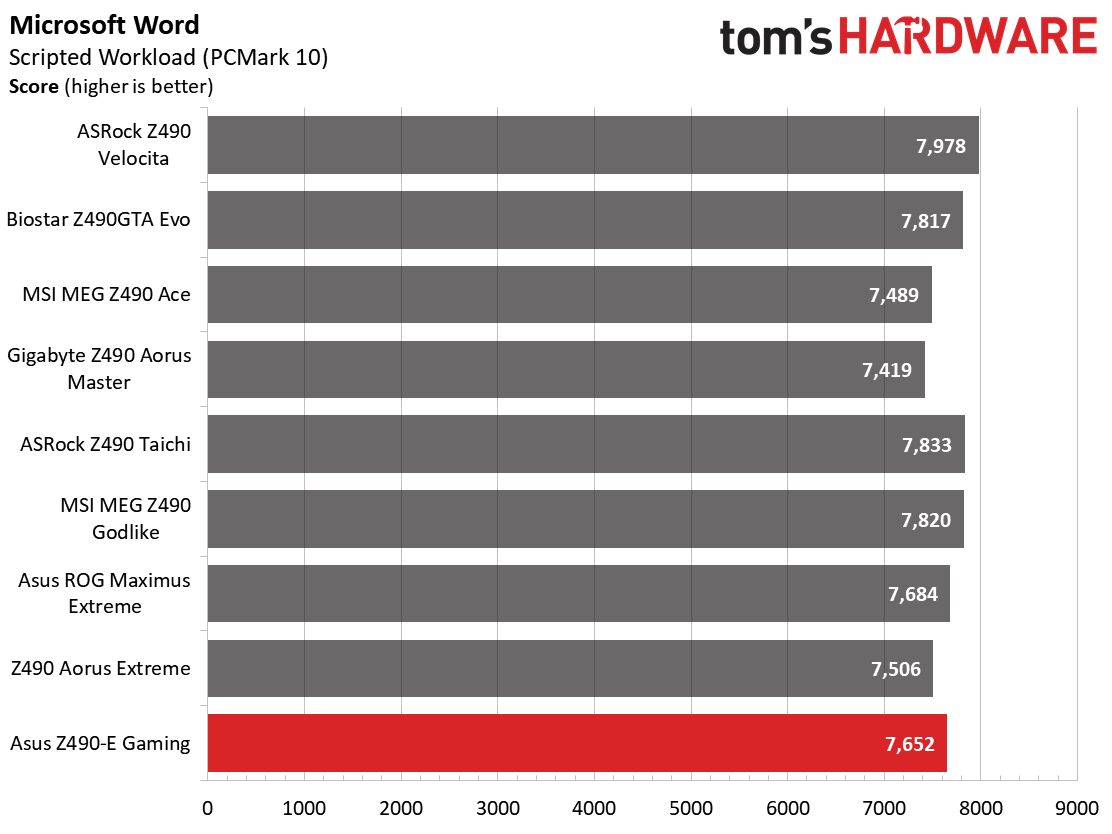
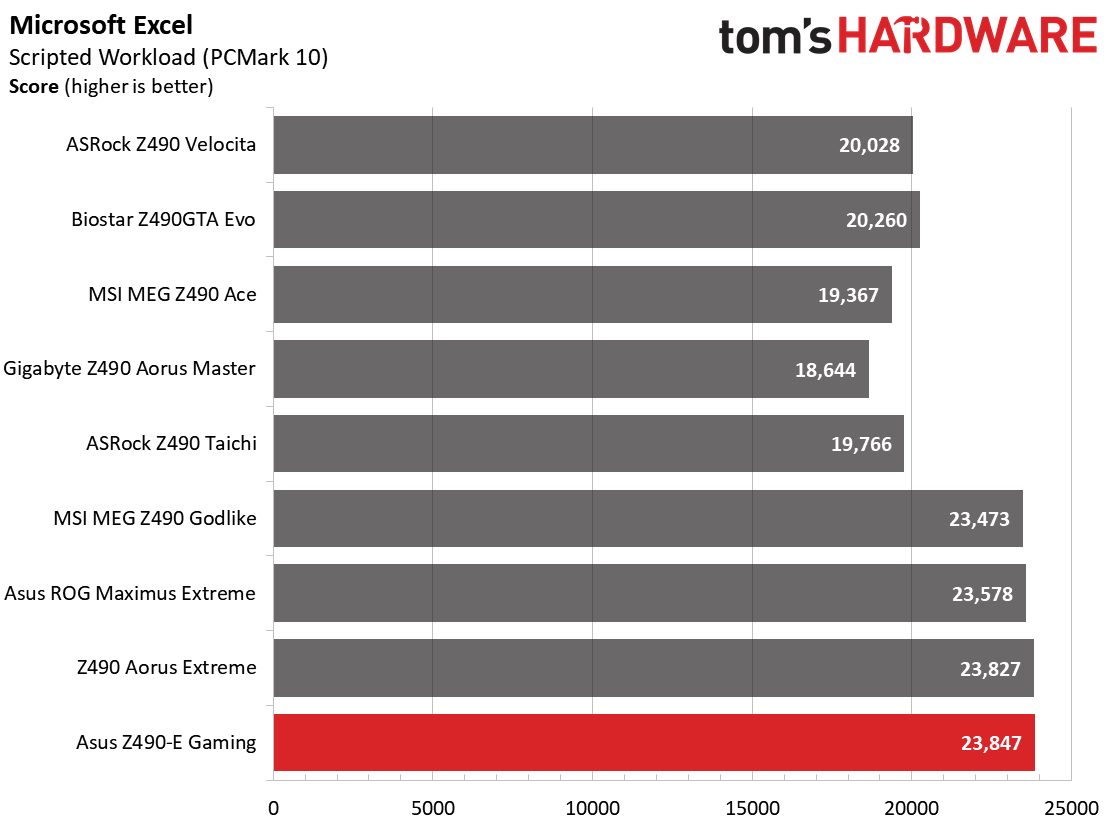
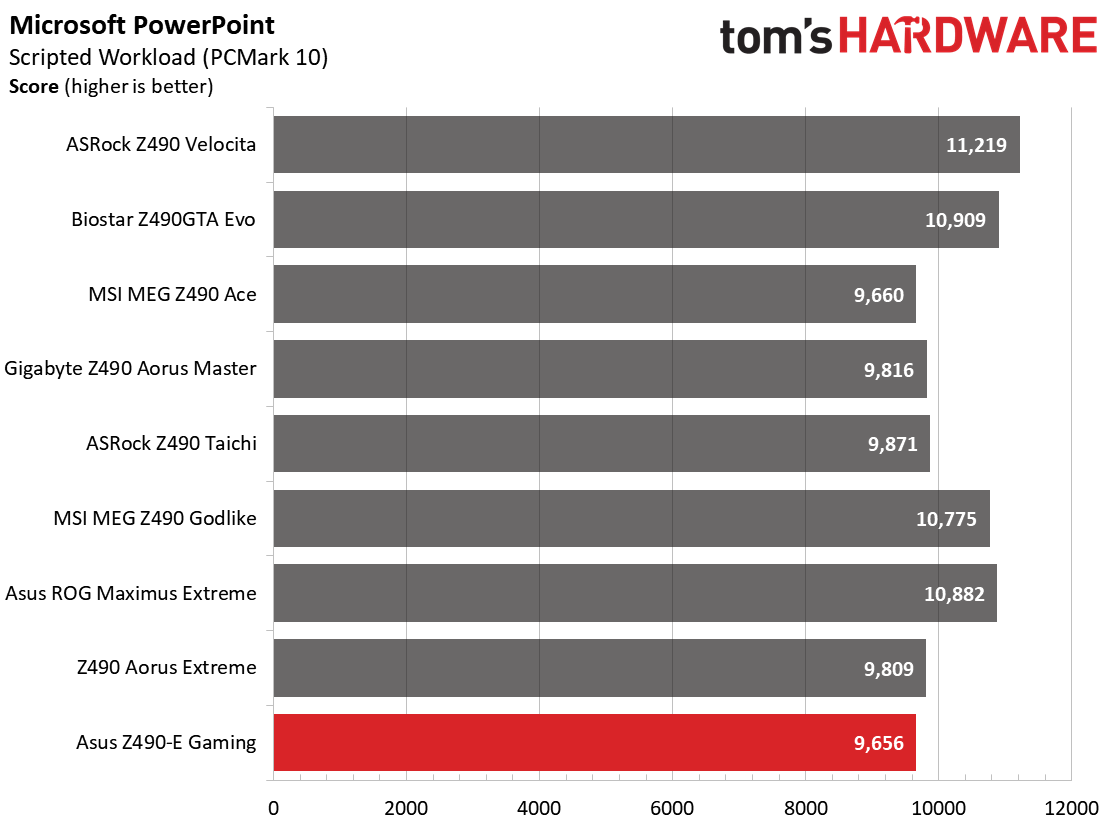
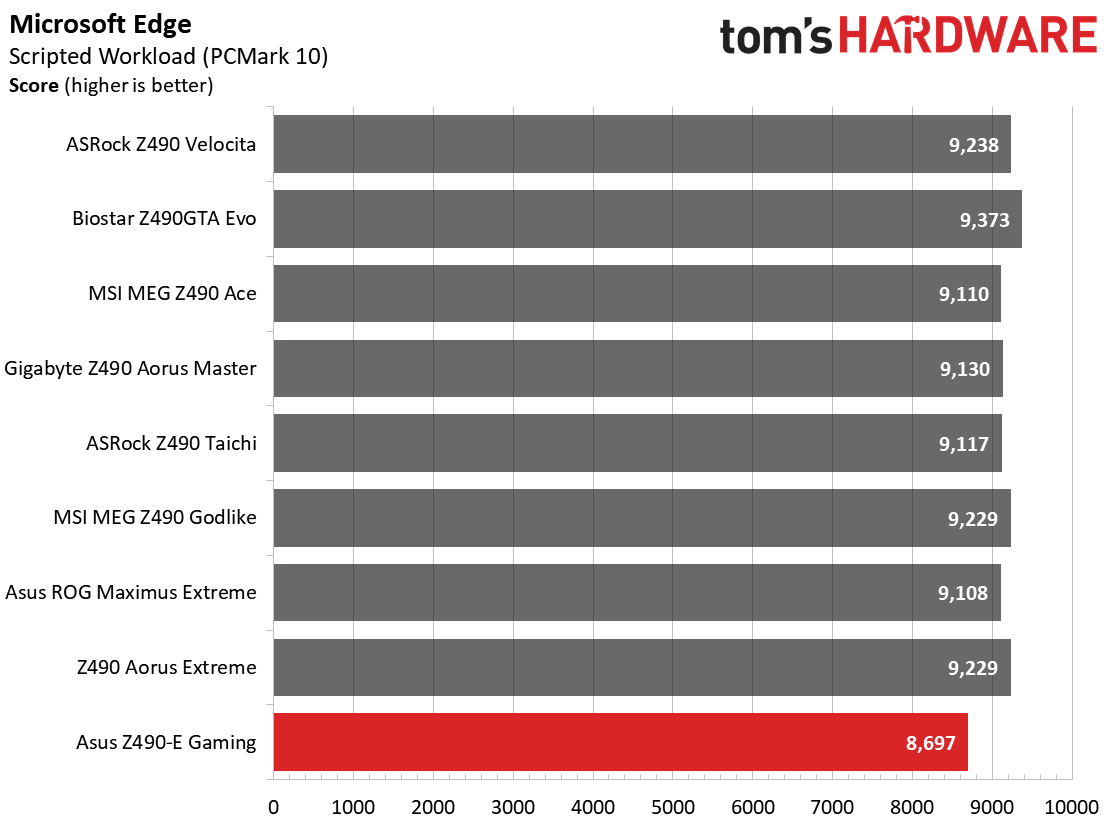
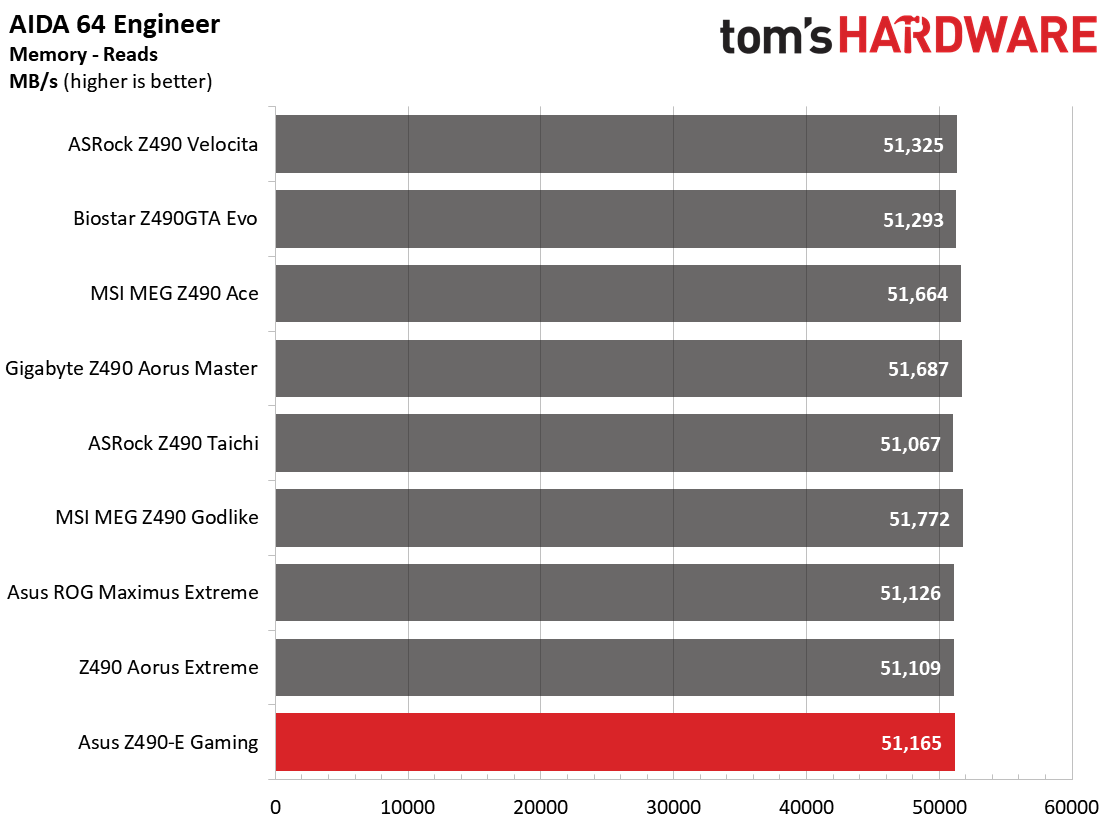
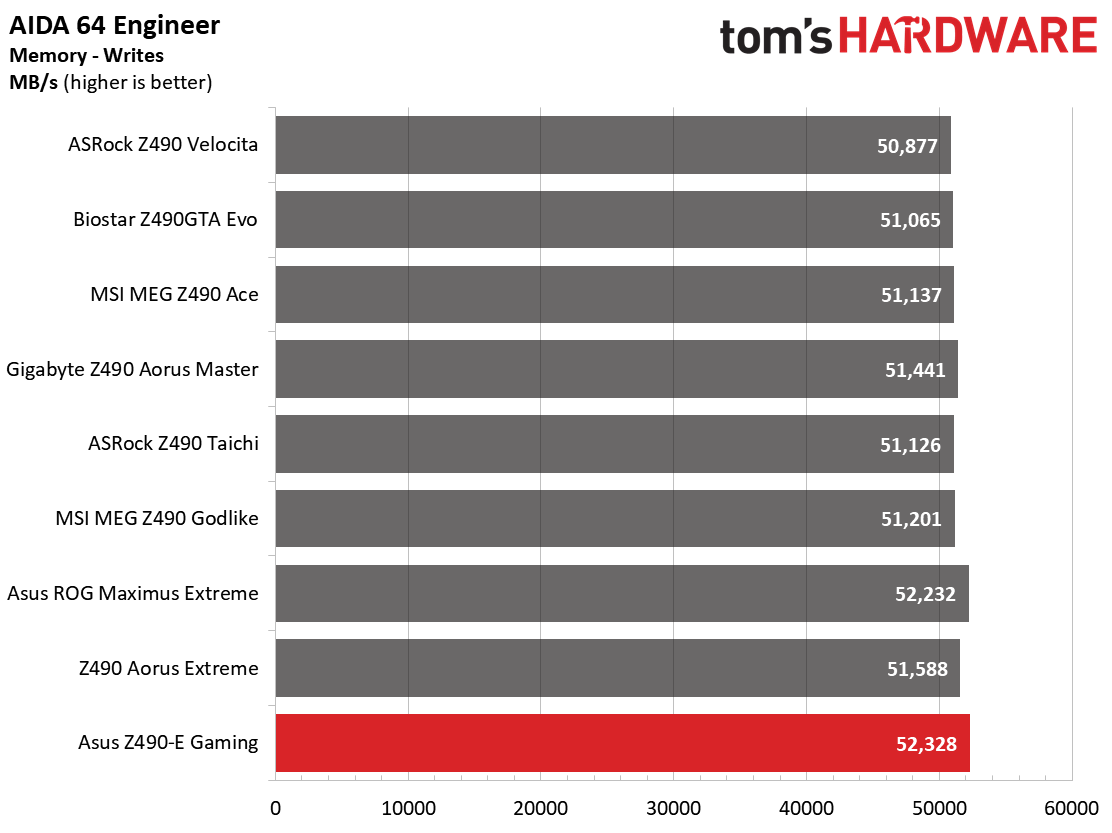
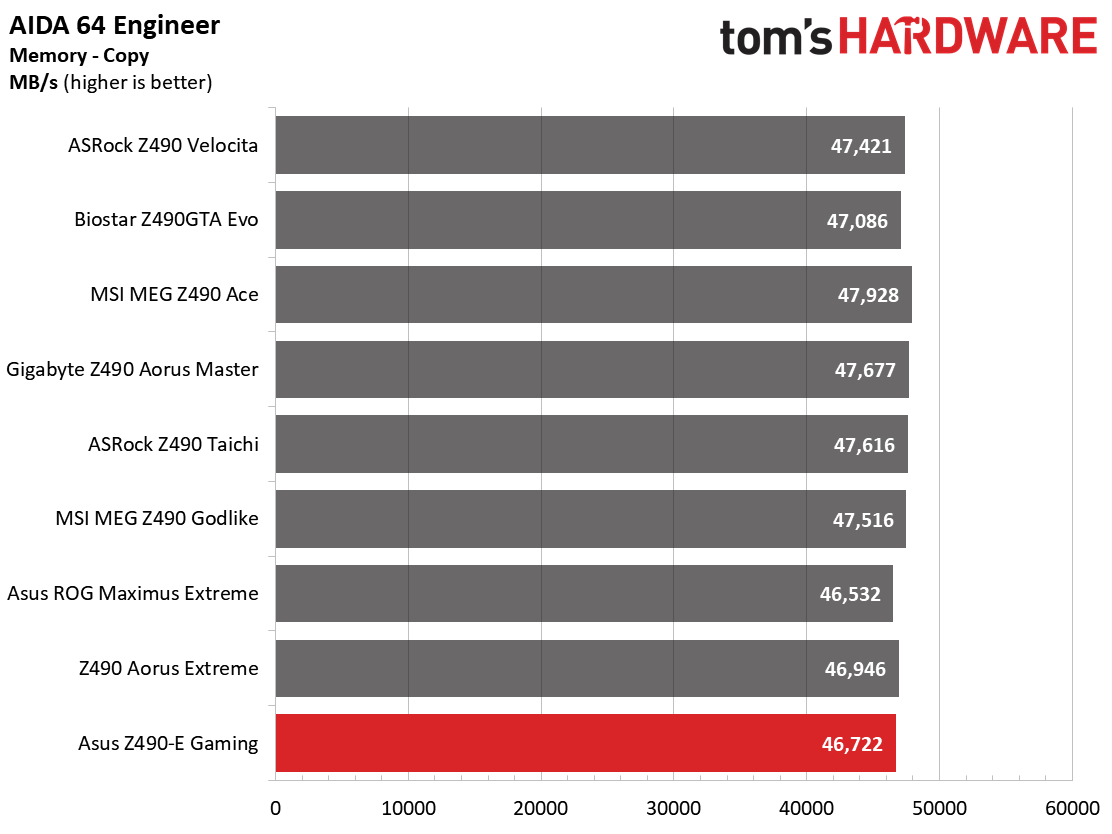
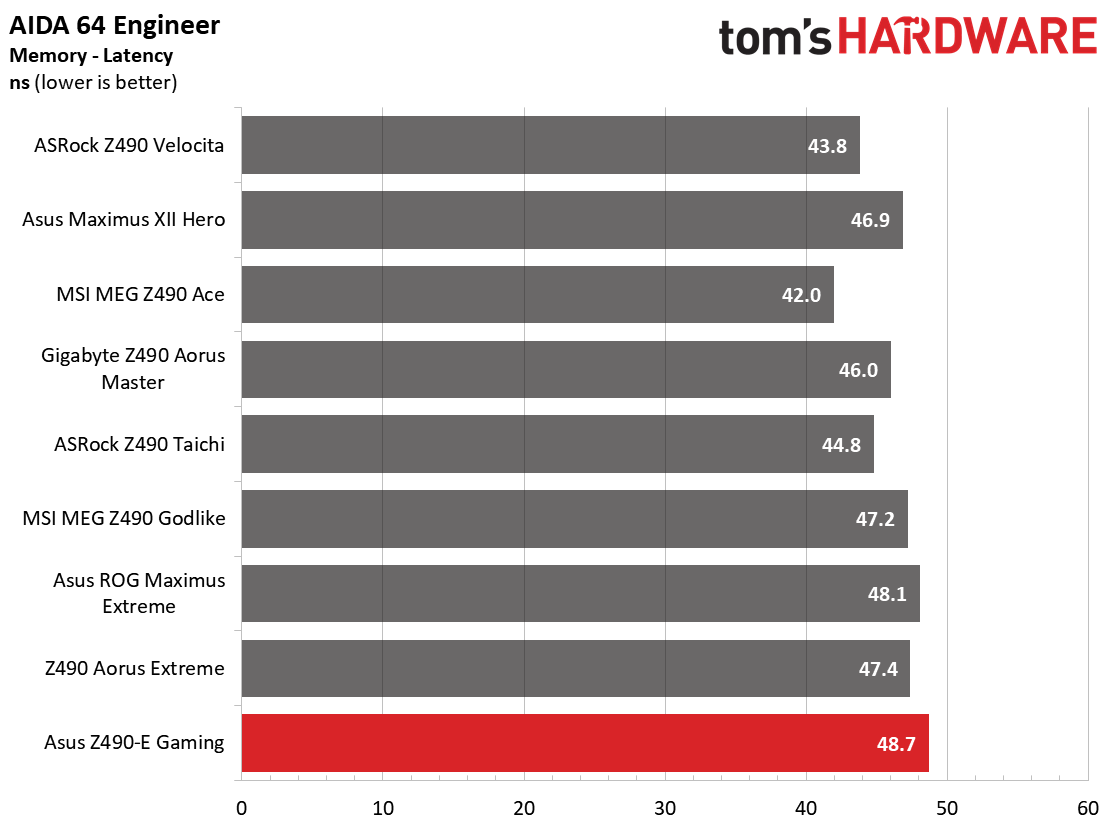
The Asus ROG Strix Z490-E Gaming performed wel,l with its results landing in the middle of most of the other tested motherboards. Results in the PCMark 10 and MS Office tests were a bit slower on average than other boards, however you wouldn’t notice the difference in the real world. Everything else was well within the margin of error.
Timed Applications
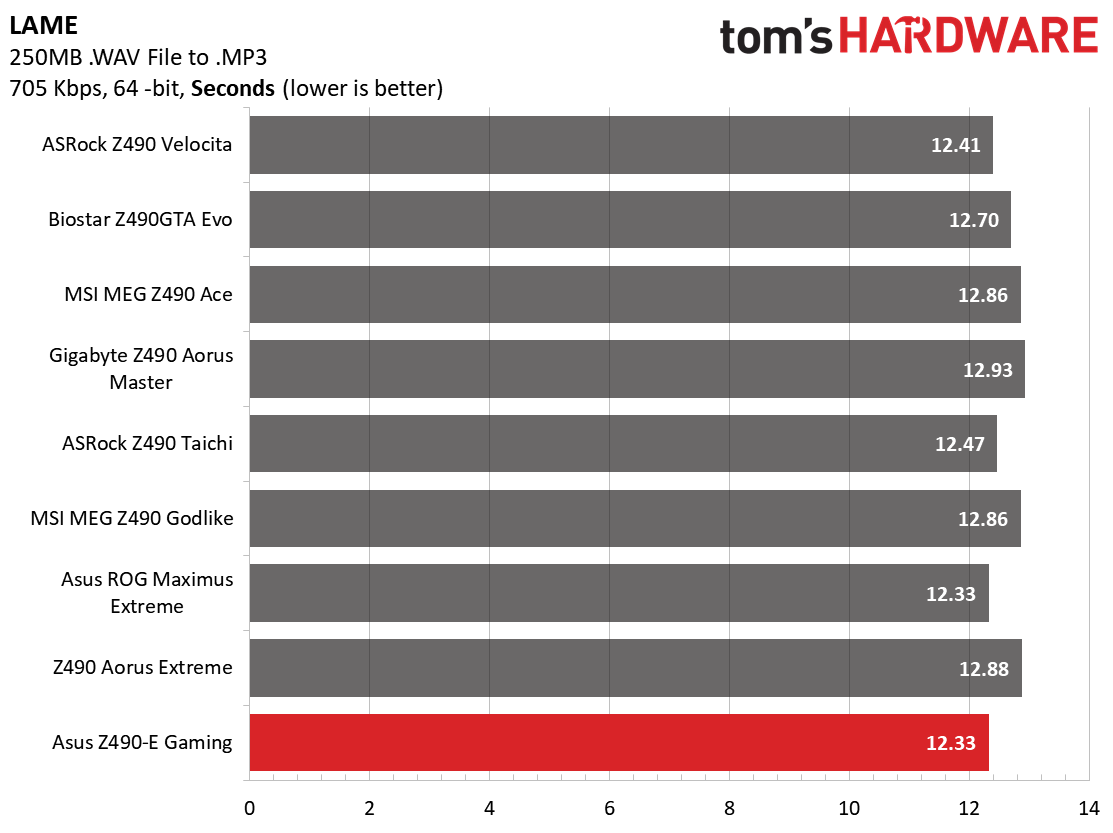
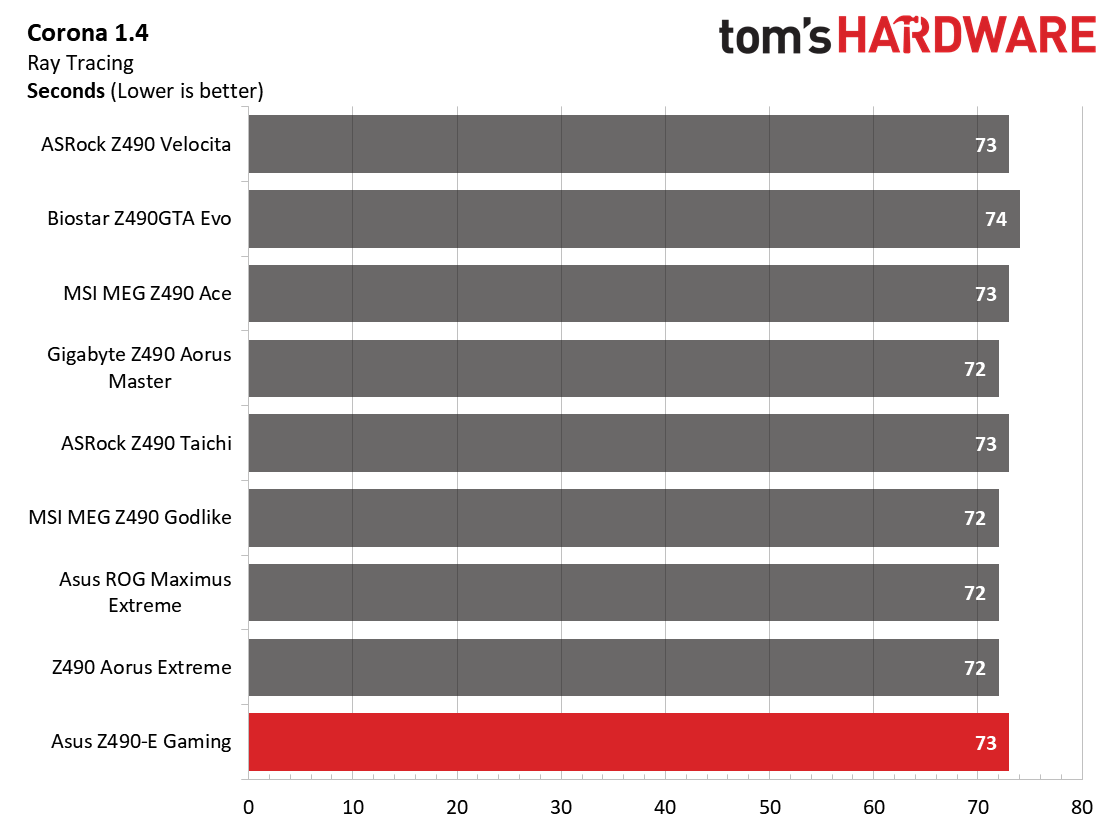

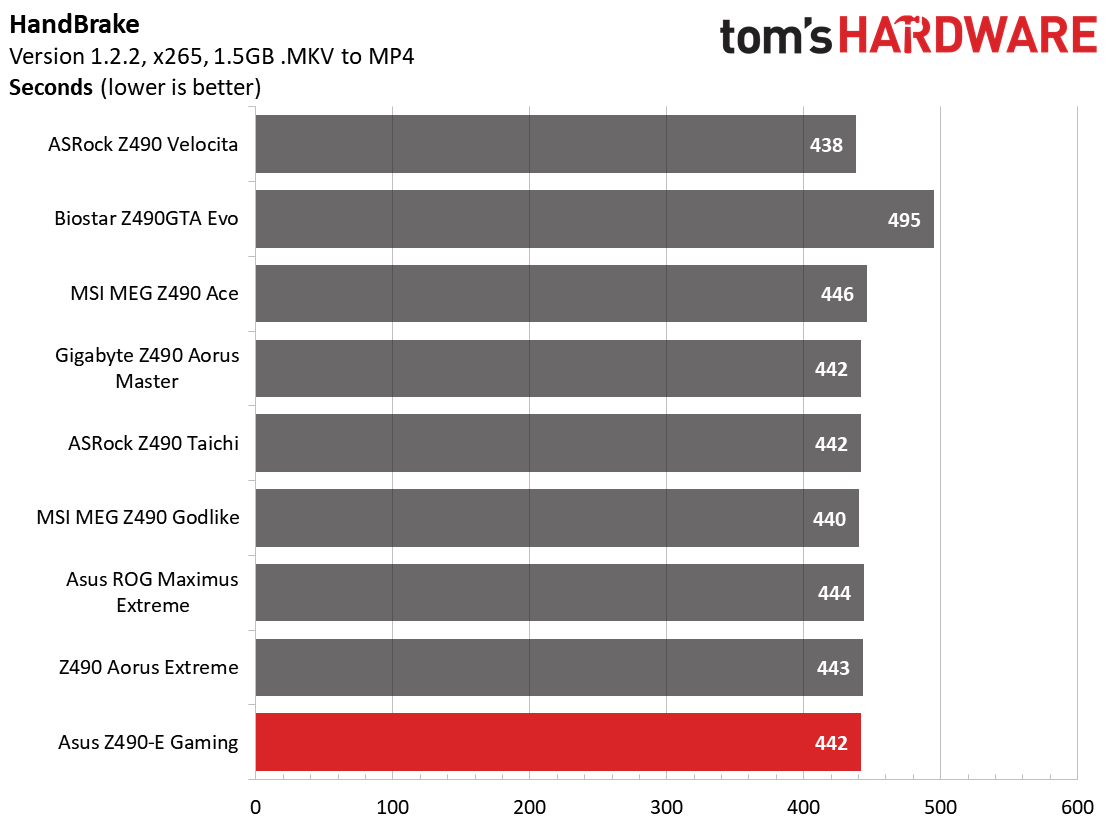
The timed applications show a different story. In the LAME testing, the 12.33s time ties for the fastest result. And we saw a similar story between the boards. Handbrake times were also on the faster side of all results here.
3D Games and 3DMark


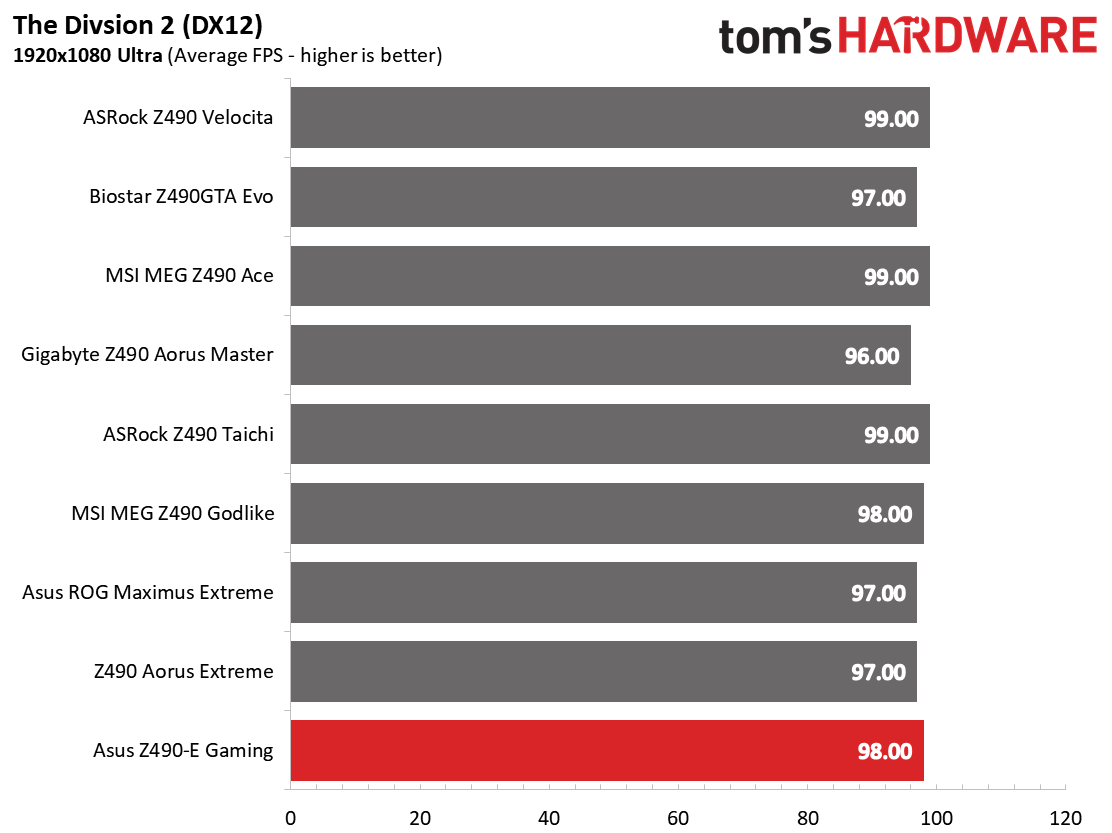

We’ve recently updated our game tests to more The Division 2 and Forza Horizon 4. The games are run at 1920x1080 resolution using the Ultra preset. As the resolution goes up, the CPU tends to have less of an impact on most games. The goal with these settings is to determine if there are differences in performance at the most commonly used resolution with settings most people use or at least strive for.
Our gaming and 3DMark results showed similar performance to all of the other Z490 motherboards we’ve tested. There are no concerns here with gaming and synthetic 3D applications.
Get Tom's Hardware's best news and in-depth reviews, straight to your inbox.
Power Consumption and VRM Temperatures
The first glimpse of power use for this platform and the Core i9-10900K may be a bit shocking to some, with loads reaching almost 200W at stock speeds (because most boards allow for a higher draw than intel’s spec), many users will be hard-pressed to keep these cool and get the most out of the chip. For power testing, we used AIDA64’s System Stability Test with Stress CPU, FPU and Cache enabled using peak power consumption value within the first minute. The wattage reading is taken from the wall via a Kill-A-Watt meter to capture the entire ecosystem (minus the monitor). The only variable that changes in these reviews is the motherboard; all other parts are the same.
Our Z490-E Gaming sipped on power at idle, using 49W at the wall. This result matches the Z490 Aorus Master and was behind only the Biostar Z490GTA Evo by one watt. During load tests, the Z490-E Gaming peaked at 254W, which is also on the efficient end of the results, second only to the MSI MEG Z490 Ace that used 250W. Overal, Asus’ board is one of the most efficient we’ve tested so far.
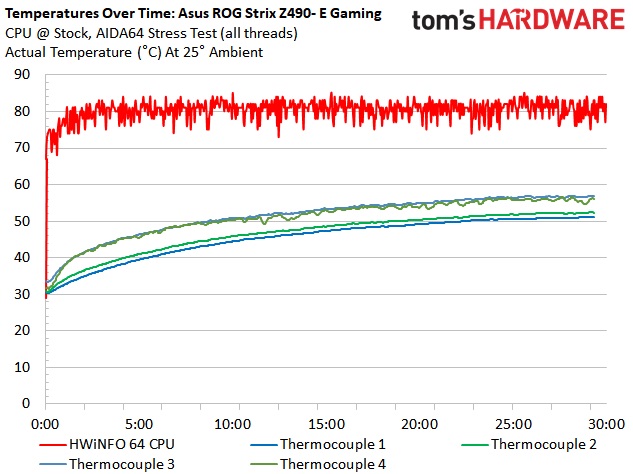

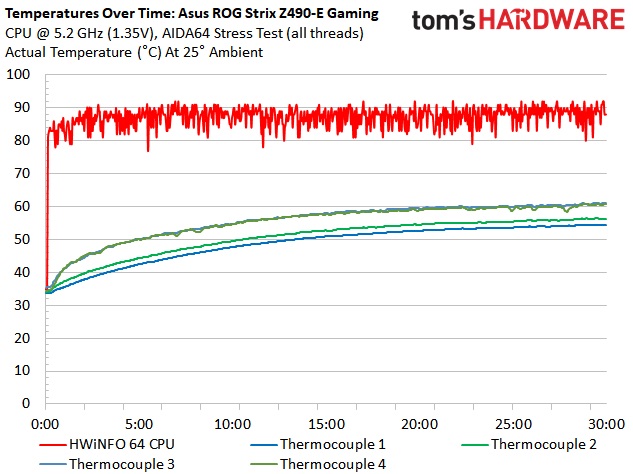
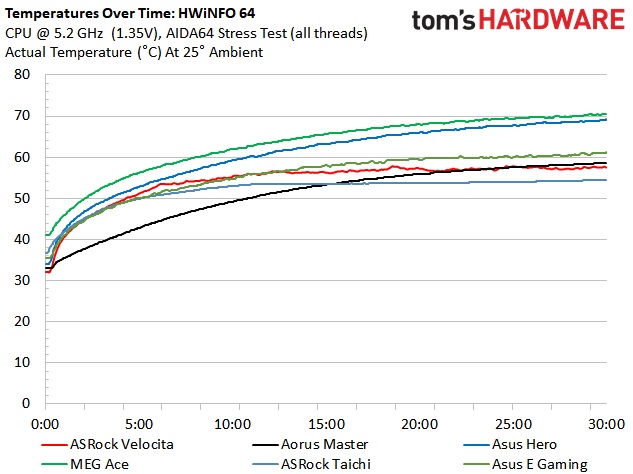
The 14-phase VRM worked well at both stock settings and while overclocked, easily running within its operating parameters. During stock operations, the VRM peaked around 57 degrees Celsius, which puts it on par with much more expensive boards with better power delivery. When overclocked, the peak VRM temperatures in our testing reached about 62 degrees Celsius -- a middle of the pack result again. We have no worries that the Asus Z490-E Gaming VRMs are plenty capable when running stock or while overclocked using ambient cooling methods.
Overclocking
From our other Z490 motherboard reviews, we know the CPU sample lets us run up to 5.2 GHz at ~1.35V while keeping the CPU somewhere around 90 degrees Celsius and not throttling due to thermals. Overclocking on the Z490-E Gaming board proved to be as easy as most other motherboards. With the power limits already out of the way (remember we chose F3 to get into the BIOS bypassing Intel specifications) it was setting speeds and go. In order to manage vdroop, we raised the LLC to level 2, which kept voltage fairly stable compared to what was set in the BIOS.
On the memory front, we dropped our DDR4 4000 kit in, set XMP, and away we went. The only settings that needed to be adjusted were VccSA and VccIO. Like many other motherboards, this one also set these values much higher, 1.3V and 1.2V respectively, than what was needed. We ended up at 1.2V for VccSA and 1.1V for VccIO for stability.
Final Thoughts
The Asus ROG Strix Z490-E Gaming proved to be a competent performer with capable power delivery and a feature set fitting of the price point. Performance isn’t everything and the Z490-E looks good as well. The all-black board gives way to RGB LEDs that are tastefully implemented, illuminating the branding on the board.
Compared to similar motherboards we’ve tested, the ASRock Z490 PG Velocita and Biostar X490GTA Evo, the Velocita sports higher listed memory support speeds and eight SATA ports where the others lower listed memory speed and have six SATA ports. Our Asus Z490-E Gaming does have the better power delivery, but all (except the Biostar which is limited to Intel specifications) overclocked our CPU without issue. Outside of those differences, it comes down to looks and price.
Beauty is in the eye of the beholder so we’ll leave that up to your discerning eye to choose. Price however, is a different story and there are several capable motherboards in the $250-$300 price bracket. The Z490-E Gaming is currently listed at $299.99, while the Velocita is $259.99. If you do not need Wi-Fi capabilities, the Z490-F Gaming is priced at $269.99 and may be the better option. There is also the MSI MEG Z490 Unify at $299.99 that compares well at the sub $300 price point.
The Asus ROG Strix Z490-E Gaming is a solid motherboard to build your Z490 based platform on. From the clean looks and solid feature set to the capable VRMs, there is little to complain about with this board. If I had to pick something, I would like to have seen this priced around where the Z490-F is ($260), as the ASRock PG Velocita would be a better buy on price alone. That said, if you are in the market for a sub $300 Z490 based motherboard, make sure to check out the Asus ROG Strix Z490-E Gaming as it is certainly a viable option around $300.
MORE: Best Motherboards
MORE: How To Choose A Motherboard
MORE: All Motherboard Content

Joe Shields is a staff writer at Tom’s Hardware. He reviews motherboards and PC components.
